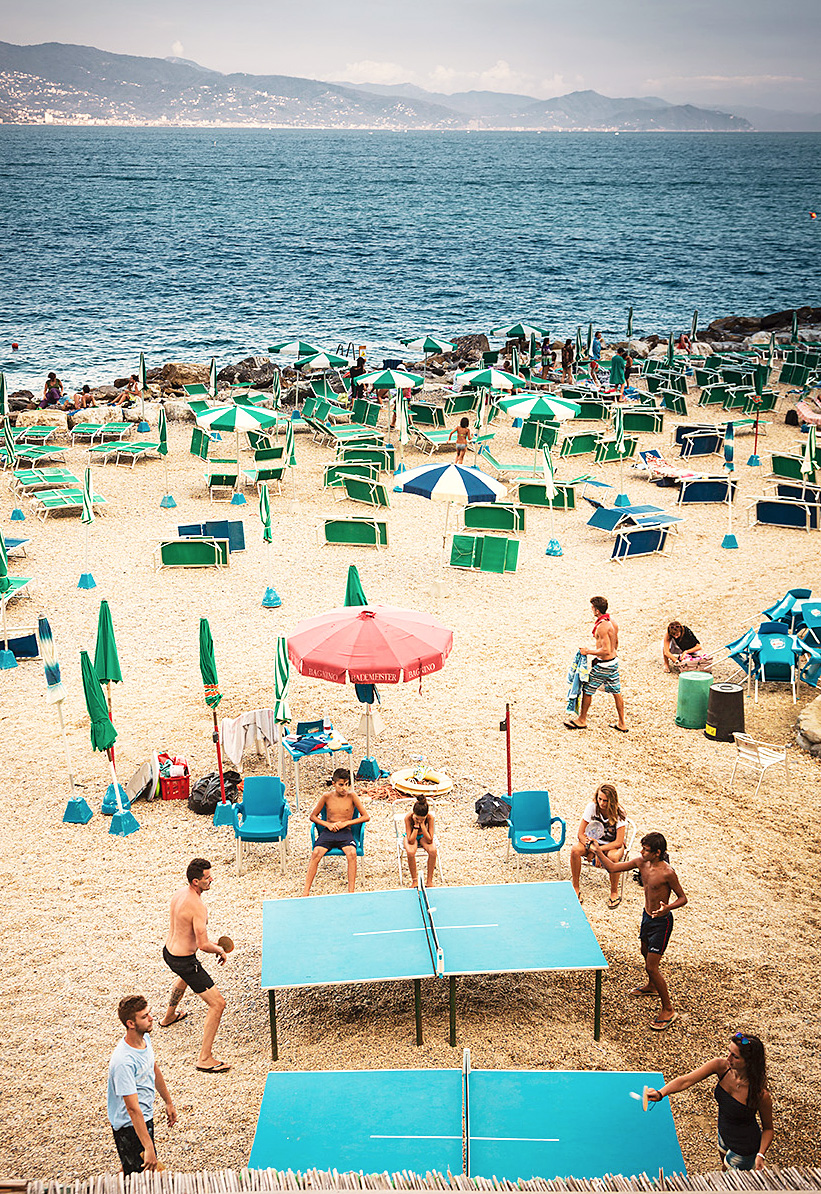Ferragosto
We asked Victoria Cece, an openly New Jersey Italian American now living her adult life in Italy as a food and beverage writer, to delve into Italy’s “great vacation escape.” This phenomenon occurs during August when an estimated 90% of businesses shut down, allowing Italian business owners and operators to escape to the sea or mountains. Victoria’s deep affection for history and her enthusiasm for a good religious procession shed light on the significance of this holiday for Italians. In the ‘era’ of Taylor Swift and the summer of Barbie, it was not surprising to discover that this sacred holiday has roots in Italy’s feminine tradition.
Why One Day Defines an Entire Month in ItalY
There’s a reason why you may hear more English than Italian on the streets of Rome in August or why your favorite restaurant in Italy may close for three weeks during the primetime of the summer tourist invasion. It all comes down to one word (and it’s not the ‘heat’).
It’s Ferragosto, a holiday celebrated on August 15th.
Ferragosto has multiple origins in Italian lore, but its alignment with the 15th of August dates back to the 5th century with the Catholic holiday, L’Assunzione di Maria – the Assumption of Mary. I still vividly remember crossing the bridge in Sabaudia, a popular beach destination south of Rome, following Mary’s procession to Lago di Paola, where clergy members sent Mary off in her lavish little boat.At that time, I didn’t know why Mary was going for a boat ride or how Ferragosto, and the practice of taking a vacation in August, was popularized during Italy’s Fascist period. There I was, a bratty little kid, celebrating the very holiday in a town Mussolini built himself.
FERRAGOSTO’S ANCIENT ROMAN ROOTS
We can’t understand Fascism or Ferragosto without ancient Roman history. The holiday dates back to Emperor Augustus (also known as Octavian), who introduced the ‘Feriae Augusti,’ or Augustus’ holidays, in 18 BC. They kicked off on August 1st, granting the Roman people time to relax following an intensive harvest season.
But Augustus didn’t stop with one day. He meant feriae – ‘holidays’ in English – for a reason. The Emperor wanted August to be a month of feasts and celebration, kicking off naturally with a feast to celebrate himself. Then, there were the feasts of Salus (the Goddess of Health) on the 5th, Diana on the 13th, and so on.
What is so fascinating about these holidays is how almost all of them highlight female deities or ‘feminine’ concepts like fertility, harvest, and childbirth. The festivities ended on August 25th with the feast of Opis, a goddess of fertility, in which only the Vestal Virgins and the Pontifex Maximus (aka the Emperor) could participate.
It’s no wonder August is a month of vacation and parties in Italy. This has been the month of partying on the peninsula for over 2000 years. In August, feasts happen practically every other day in southern Italy. These – unsurprisingly – celebrate essentially two things: food and Saints. Dusk arrives welcomingly with the smell of sumptuous and delicious grilled dishes and fried treats.
Today, these feasts are not in honor of Roman gods. Christianity rose, and paganism fell. But the Catholic Church knew it couldn’t rid the people of their August ritual. The Church wisely aligned the ‘Feriae Augusti’ with August 15th to coincide with the Assumption of Mary. Naturally, the holiday continued to be symbolically female.
A fun fact: this holiday led to the popularity of the name Assunta (deriving from the assunzione or assumption) for girls who were born on or around Ferragosto.
MUSSOLINI AND THE FERRAGOSTO VACATION
Let’s fast-forward a few centuries to where our modern-day understanding of “Italians disappear in August” came to be. The arrival of Mussolini and Italy’s Fascist period (1922-1943) brought even more incentives for Italians to travel during August, eventually disappearing for most of the month. These historical facts are not to laud fascism but to recognize that fascism, Mussolini, and WWII definitely left marks on Italy that we still see today.
In the late 1920s, the regime organized numerous discounted excursions so every Italian could afford to vacation. Exceptionally low prices on travel and accommodations were offered, particularly on August 13th, 14th, and 15th. If you’ve heard the Fascist propaganda phrase ‘Mussolini made the trains run on time,’ it may not be surprising to discover that the regime created the ‘People’s Trains of Ferragosto’ to help Italians affordably reach their vacation destinations.
I should note – both phrases should be put to bed.
Traveling on the regional train from Rome to Napoli today, I watch this history pass through my seat and beyond the windowpane. Not long after Mussolini established these discounted trips, he set off to revitalize Lazio’s malaria-infested marshlands, the Pontine Marshes a primary example. This initiative developed not only more arable land but also modern-day Ferragosto hot spots for Romans and Neapolitans, like Sabaudia.
The adult I am on that regional train is not much different from the little girl I was in Sabaudia, who barely knew a fraction of this history. All she knew was how much she looked forward to going to that town every August. The flyers for the San Rocco feast at home in New Jersey signified to her she was leaving for Italy soon. She’d always miss that feast, but she knew her trips to Italy were worth it. Because in Sabaudia, she was free. Free to run on the beach, eat a crêpe, or play nascondino in the piazza with new friends. Because in Sabaudia, she loved following Mary’s Assumption procession, watching as she traveled through the streets to the lake, where Mary would take a cozy ride in her bedazzled boat, knowing on the other side of that procession was pasta, fireworks, dancing, and gelato.
For me, Ferragosto will always be a symbol of summer, celebration, and togetherness – a symbol of Italy.

Image courtesy of the author, Victoria Cece.
